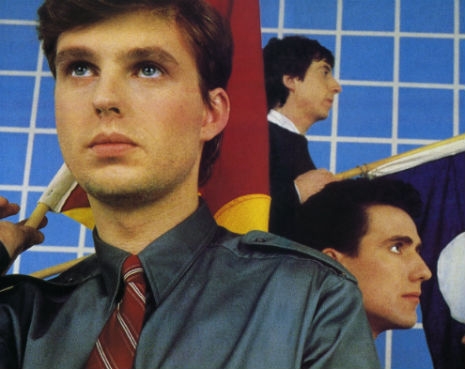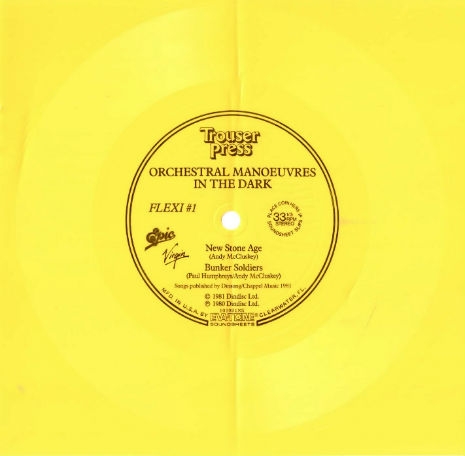
Before their American pop chart success in the mid-80s and their subsequent close generational association with the teenage rom coms of John Hughes, Orchestral Manoeuvres in the Dark, or OMD, were seen as quite a credible, even “intellectual” musical unit, comparing favorably to other serious English groups of the New Wave and post punk era like Japan, Ultravox, Psychedelic Furs or Soft Cell. But like the Furs, OMD would ultimately heed the siren song of Molly Ringwald and Hollywood soundtrack paychecks and then… well I don’t know—or really care that much either, to be honest—what happens after that. I’m not going to stick up for anything they recorded after Dazzle Ships, no “Tesla Girls” for me, thank you very much… But hey for a while there, I absolutely loved ‘em, I’m not gonna lie. Orchestral Manoeuvres in the Dark used to be a really fucking good band, even if it’s their doofier, wimpier sugar-coated MTV hits that most people, at least in America, remember them by.
OMD’s founders, Andy McCluskey (vocals, bass guitar) and Paul Humphreys (keyboards, vocals) met in grade school in Liverpool in the 1960s and were in and out of various local bands together before forming OMD in 1978. Influenced by Krautrock groups like Neu! and Kraftwerk as well as Brian Eno’s solo albums and Joy Division, they wanted to wed a pure pop sensibility to something edgy, electronic and futuristic. McCluskey later told Saint Etienne’s Bob Stanley: “We wanted to be ABBA and Stockhausen. The machinery, bones and humanity were juxtaposed.” Although now viewed, perhaps not unfairly, as having a “totally 80s” cliched synthpop sound, for their early years at least, McCluskey and Humphreys made good on their avant garde meets Top of the Pops goals.

Those of you reading this who were buying records when OMD first hit the US, probably discovered them, as I did, via a lemon yellow flexi disc that came free with a copy of the Trouser Press, the absolutely essential music magazine of the time for rock snobs. In a pre-Internet era, Trouser Press was—probably even more than college radio, which I personally had no access to—where people found out about groups like Lords of the New Church, REM, Magazine, Split Enz, Wall of Voodoo, Squeeze and so forth. It seems quaint, even ridiculous, to think about it today, but in 1982, I used to stare out the window of my parents’ house willing the mailman to show up with my monthly copy of the Trouser Press. Trouser Press was a very big deal to me. It’s how I would decide what albums to buy: It wasn’t like you could hear something like “New Stone Age” on normal radio stations, you’d have to almost take a leap of faith that a record reviewer knew what they were talking about. Or that you would agree with their verdict. Records were expensive—$5.98—so if you bought a stinker, you were stuck with it. Today when you get a free CD in a magazine, it’s more likely than not that you would probably just toss it out rather than actually play it—even the good ones from MOJO—but in the early 80s, the Trouser Press flexis were where I first heard Japan, John Hiatt, REM, Human Switchboard and a host of other up and coming bands.
Their discordant, existential and angsty song “The New Stone Age,” was the very first flexi sent with the magazine (in issue 69 with Adam Ant on the cover) and was something that really grabbed my teenaged attention. Put yourself in the mind of a music crazy kid slapping this on the turntable who has no idea what to expect and having his mind completely blown to bits, because that’s the way I first experienced this number:
Plenty more OMD after the jump…





